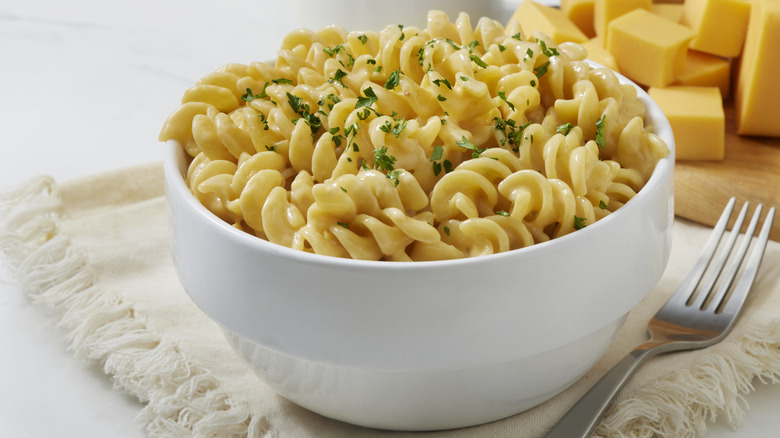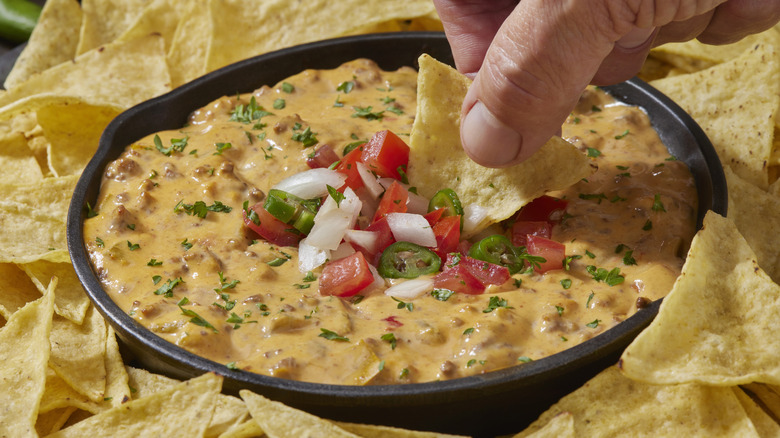The Common Mistake That Sabotages Cheese Sauce
It's hard to beat homemade cheese sauce. Sure, you can go to the grocery store and buy whiz or those powdered cheese packets with pasta, but if you have a moment to make your own sauce for mac and cheese, it's worth every bite. While it's generally easy to whip up a cheese sauce, there are some dos and don'ts for getting that perfectly melted texture while maximizing flavor — and a common mistake people tend to make is only using one type of cheese.
Not all cheeses are created equally. Some are firm, such as cheddar or Parmesan, while others are soft, like burrata or goat cheese. Aged cheeses have more bite and depth to them than young cheeses, but young cheeses tend to melt better. So when preparing a cheese sauce, you want some combination of young cheese for easy melting, plus aged cheese for more flavor. Some cheeses stretch, so you'll want to avoid those in favor of ones that fully melt.
How to choose the perfect cheese for sauce
As with so many recipes, cheese sauce is all about balance. You want the flavor and texture to come together perfectly, so focus on cheeses that melt well. Young cheeses tend to be softer and meltier because they have more moisture; cheese loses moisture as it ages. Incorporate at least one — but preferably two — young cheeses into your sauce. The label tends to separate the young from the old, with aged cheese usually saying so on the packaging (cheeses that are at least six months old are considered aged). Other hints at young cheeses include words like "mild," which means the cheese hasn't had a chance to develop that sharp bite that comes with aging.
Though younger cheese melts better, it also tends to be blander. Aged cheeses have a sharpness to them and are much more flavorful, so you do want to incorporate them into your sauce — you just want less. Aim for a ratio of two young cheeses to one aged cheese. This helps the sauce get extra melty, but that sharp cheese gives the whole mixture plenty of flavor.
Fresh cheese is always better than packaged cheese
When you're in a rush, packaged cheese comes in handy. It's essentially just pre-shredded cheese, but it contains some additives that don't make it ideal for cheese sauce. Anti-caking agents prevent the shredded cheese from binding together in the bag, but they can also have a negative impact on how smoothly it melts; shredded cheese tends to clump. Fresh block cheese that you shred yourself doesn't contain any of these agents and therefore will have a smoother texture.
While cheese is the main component, there are other ways to build flavor and texture in cheese sauce. Start by creating a roux, which is a mixture of fat and starch (it's usually melted butter and flour). That starch will prevent separation once the cheese is melted, and the roux will also thicken the sauce. And as far as liquid goes, higher-fat dairy is richer and thicker, so for the best-tasting cheese sauce, use half and half or whole milk. Heavy cream works, too, but be careful because the heavy cream paired with the roux could cause the sauce to become way too thick.


